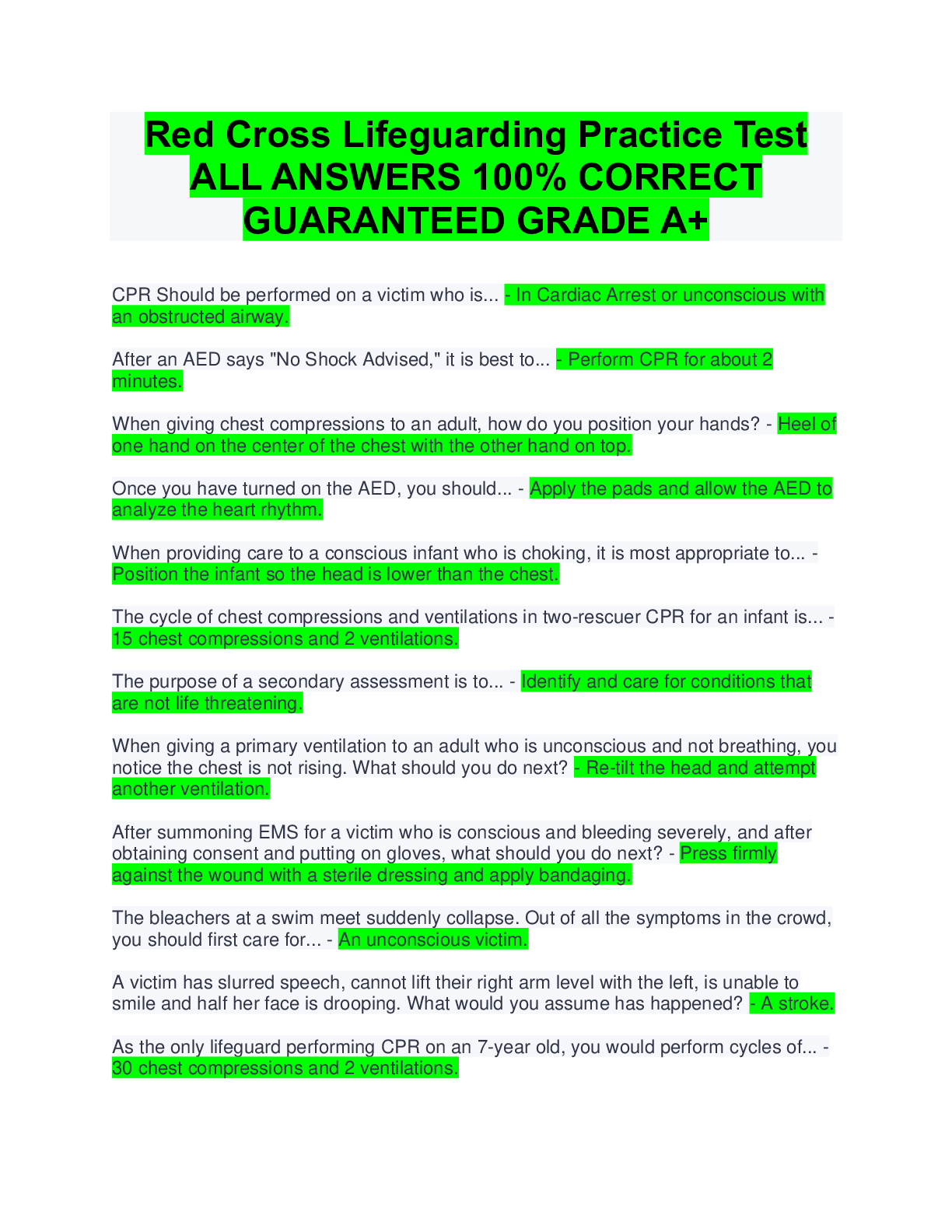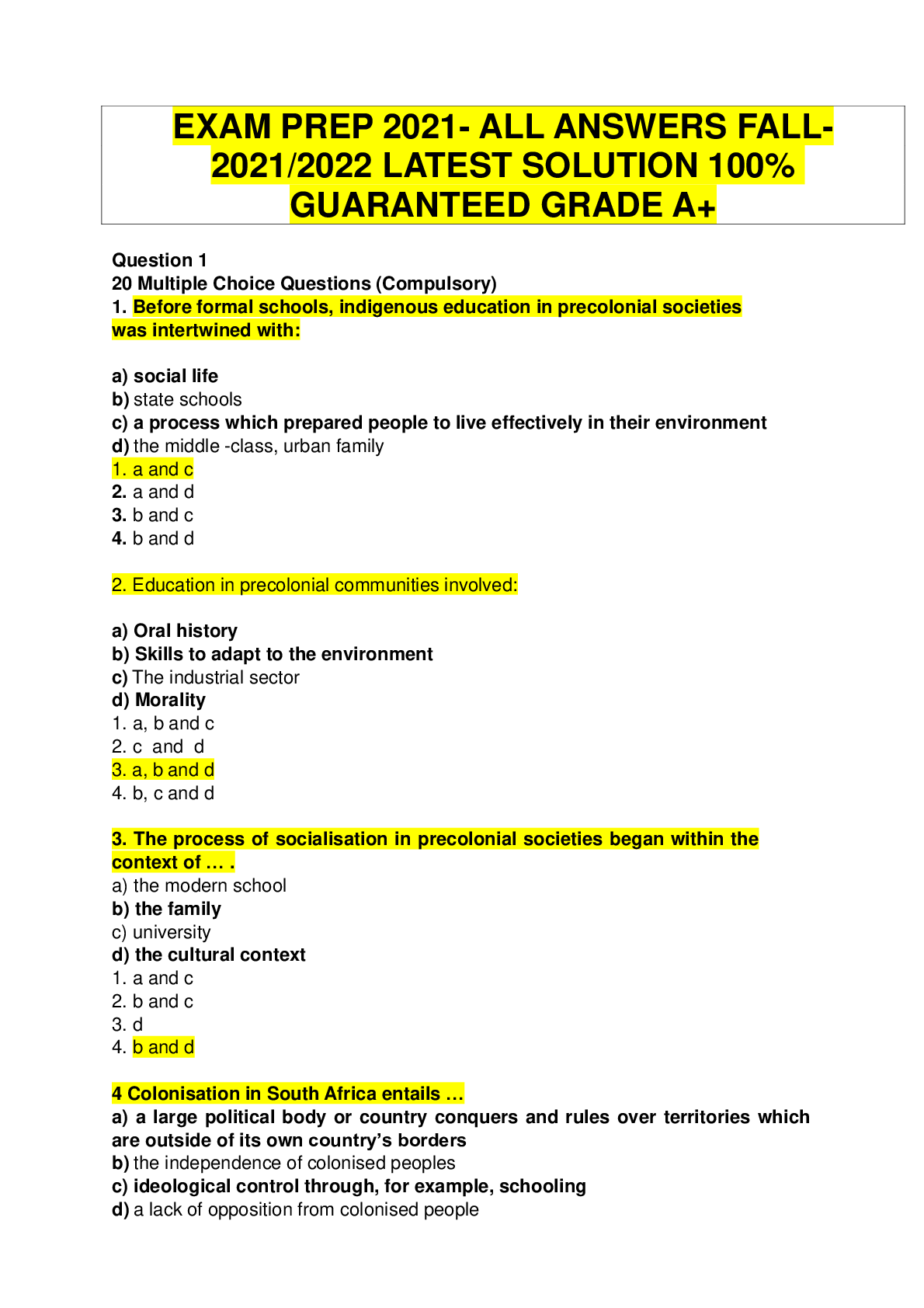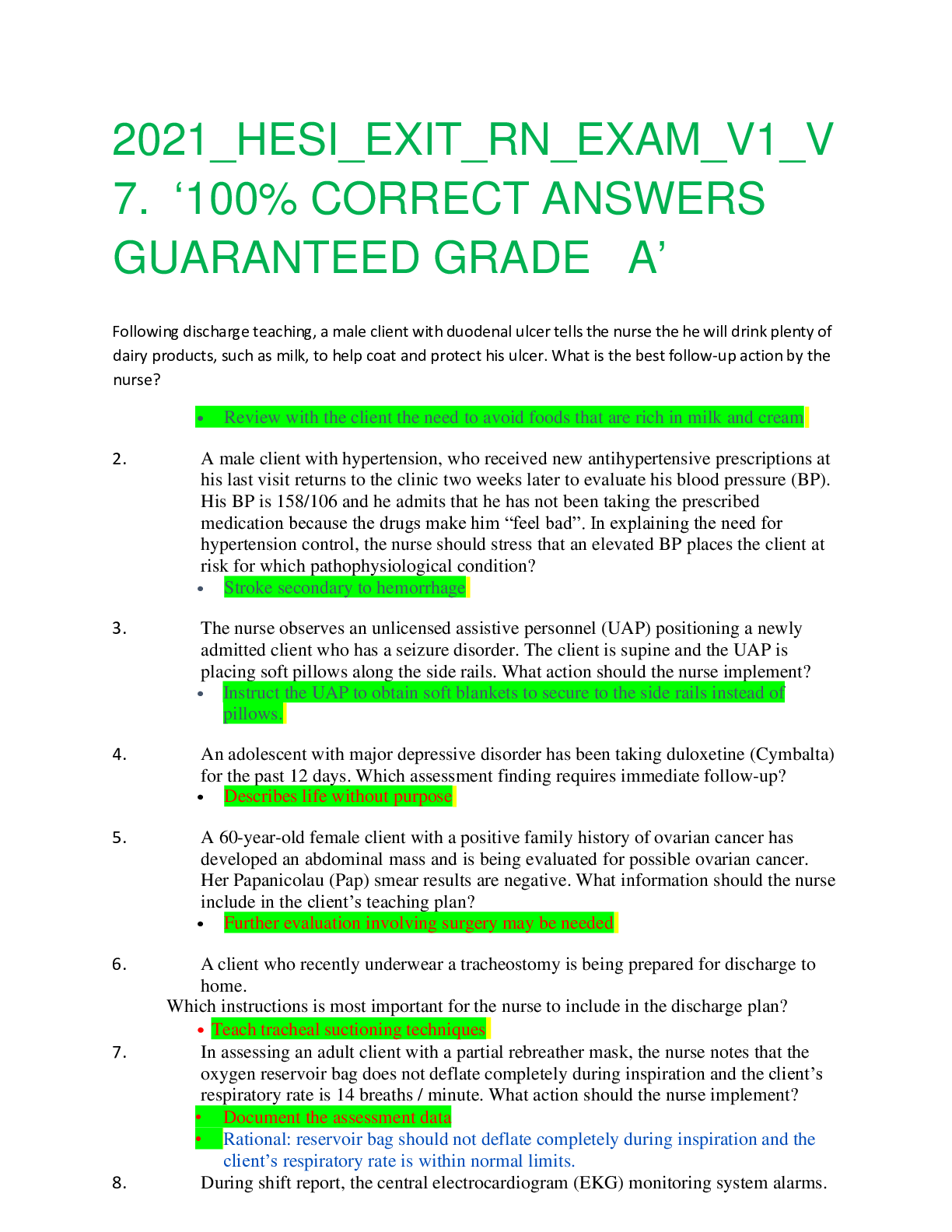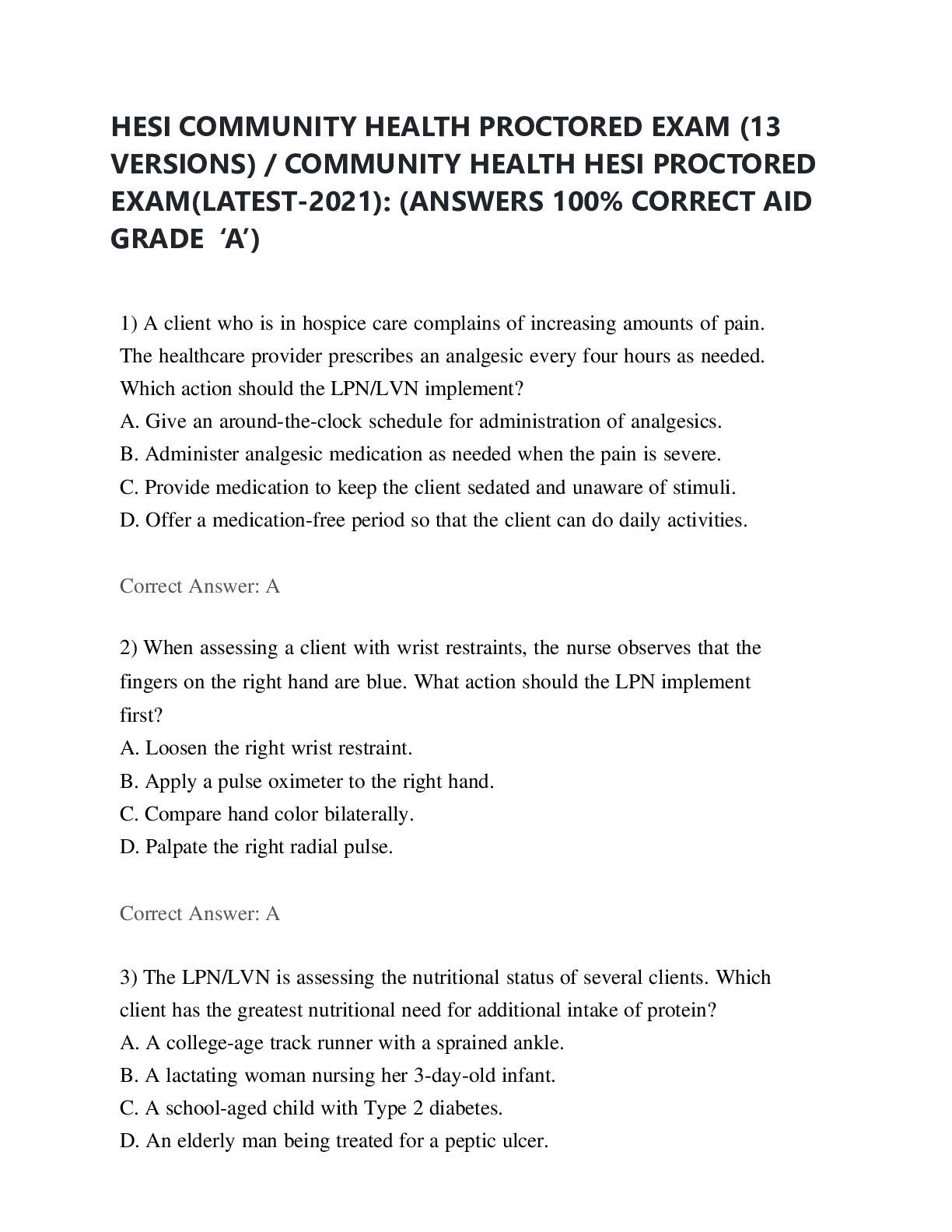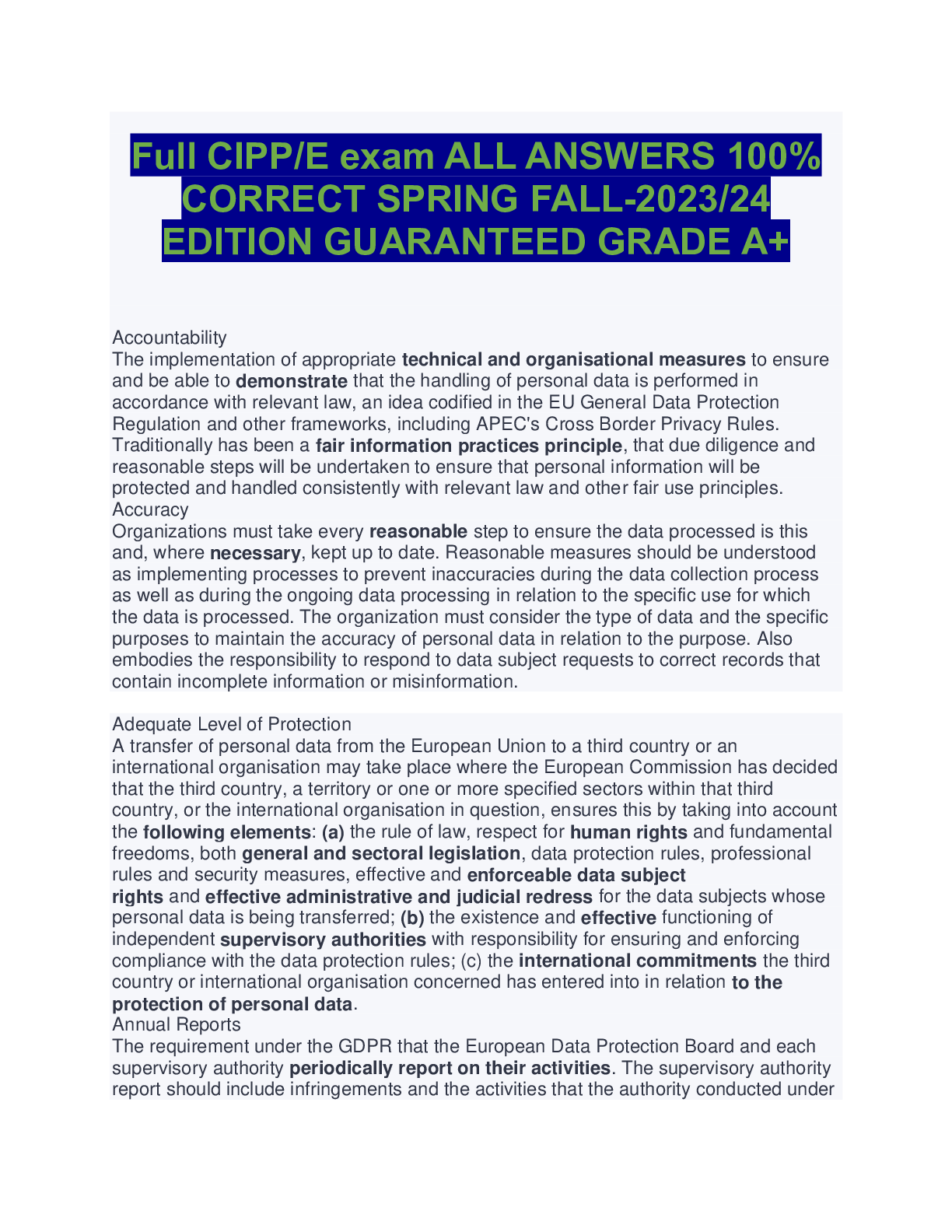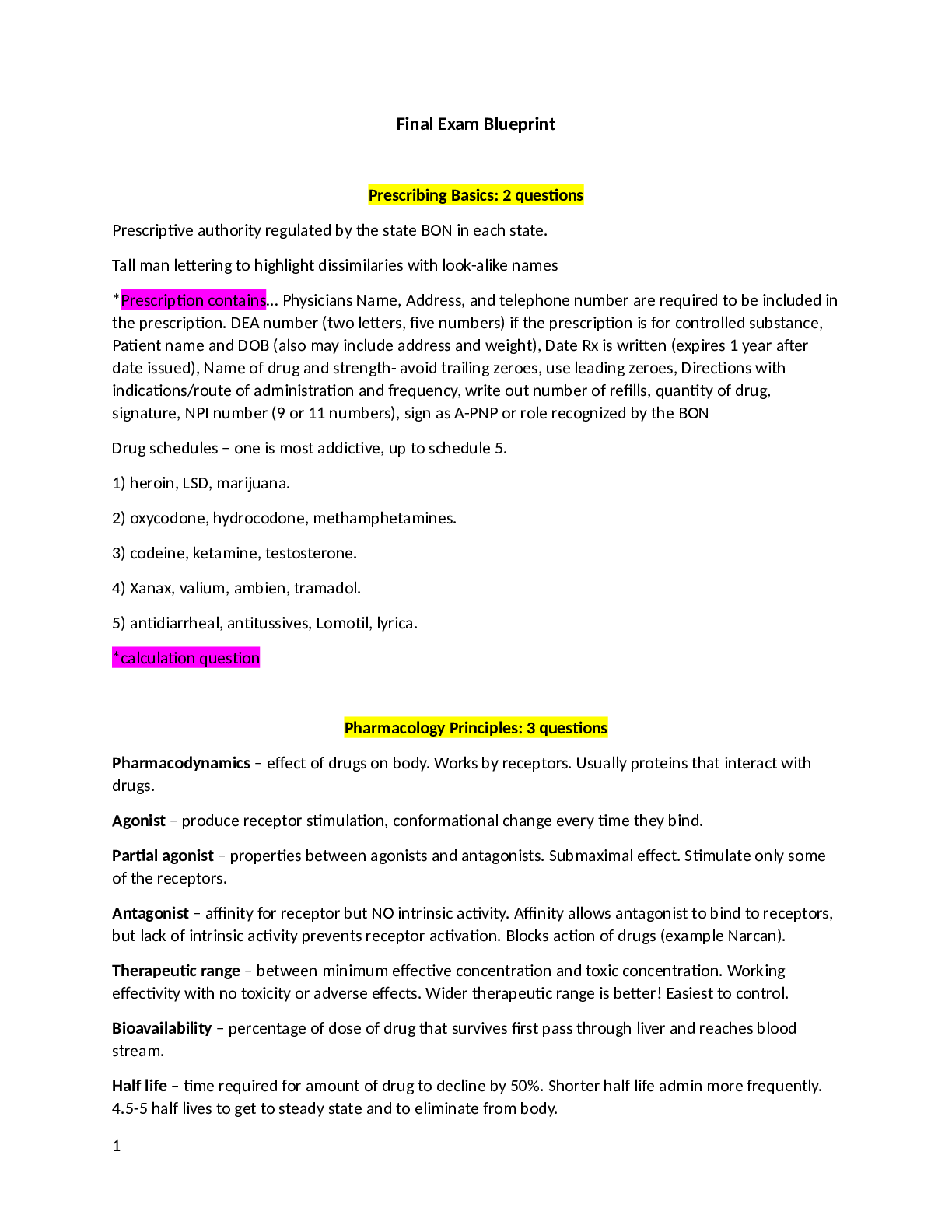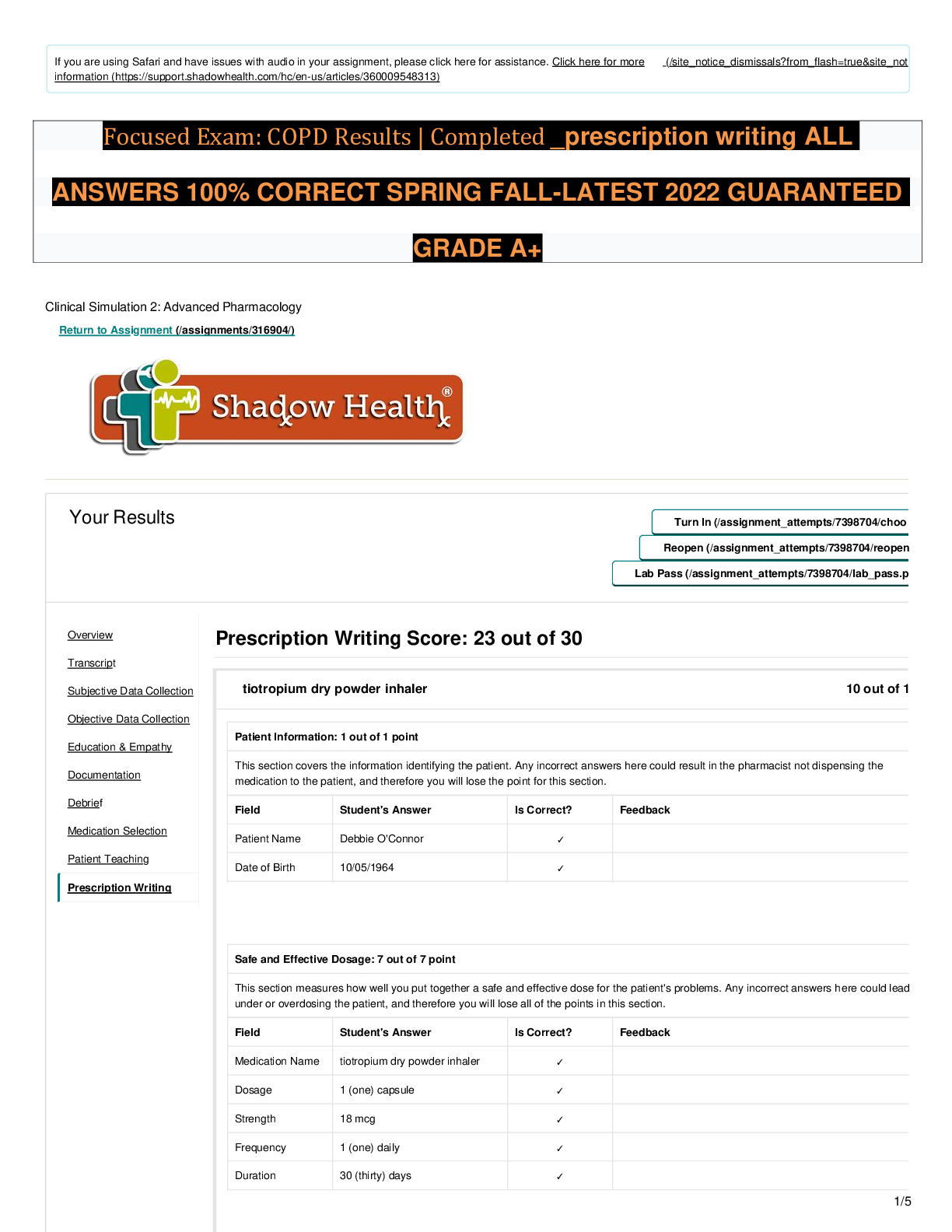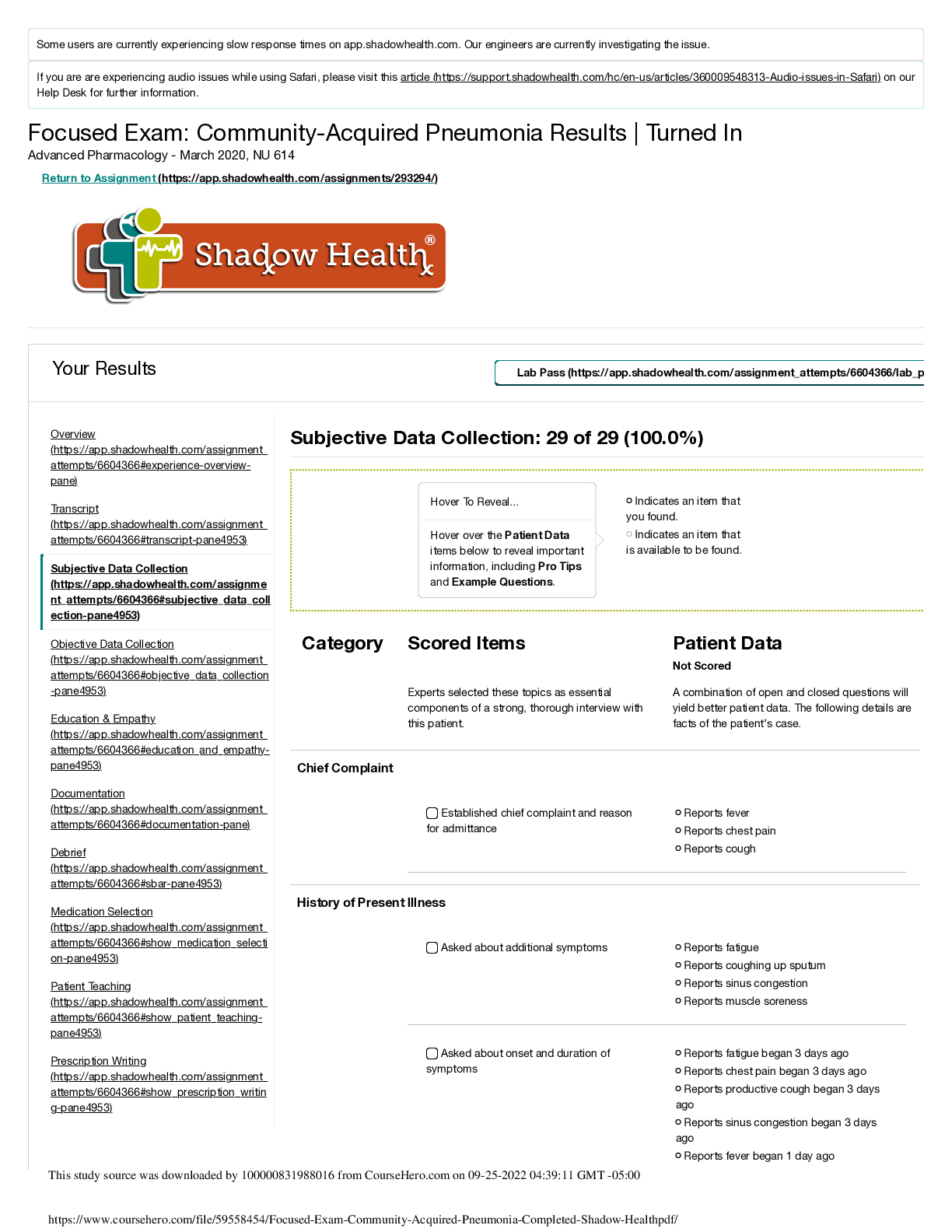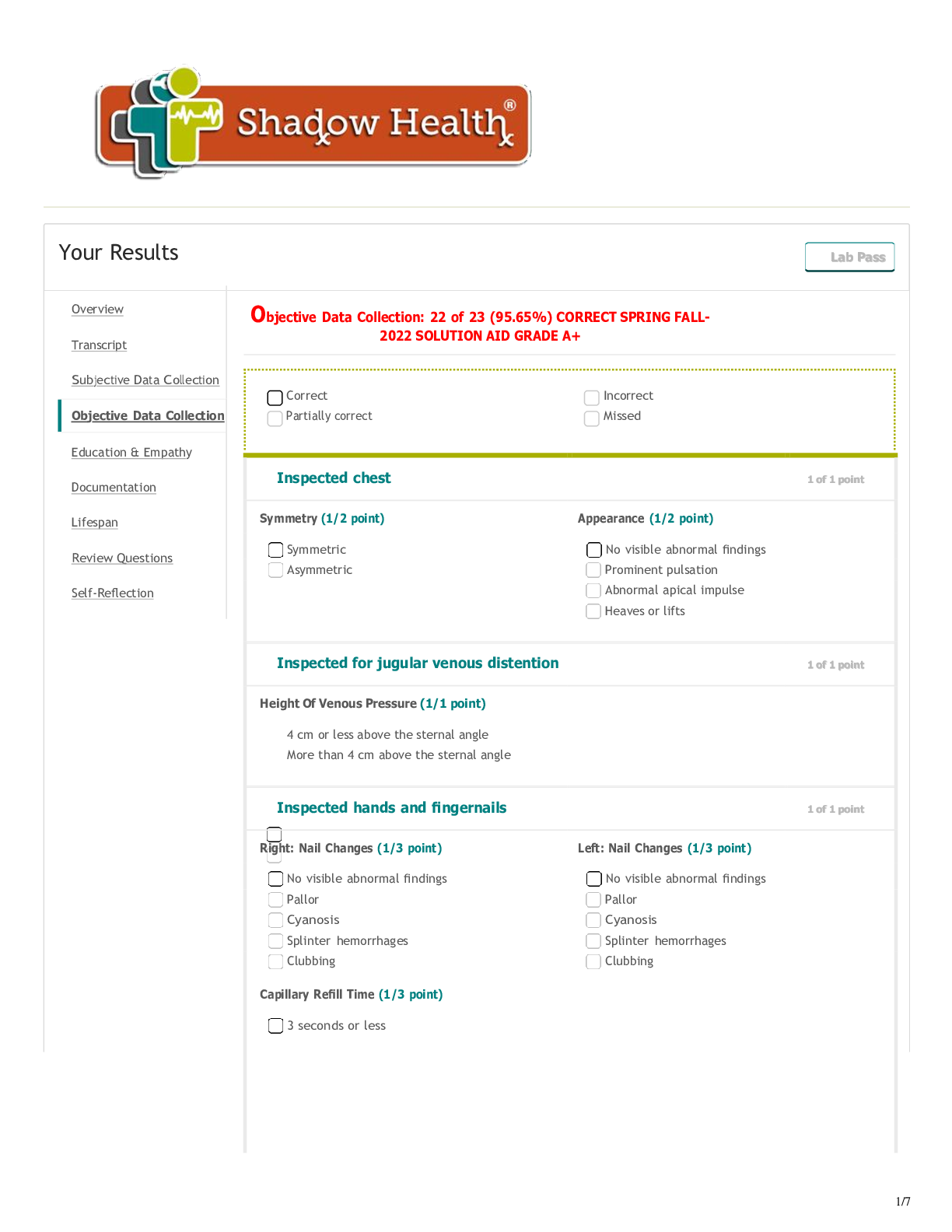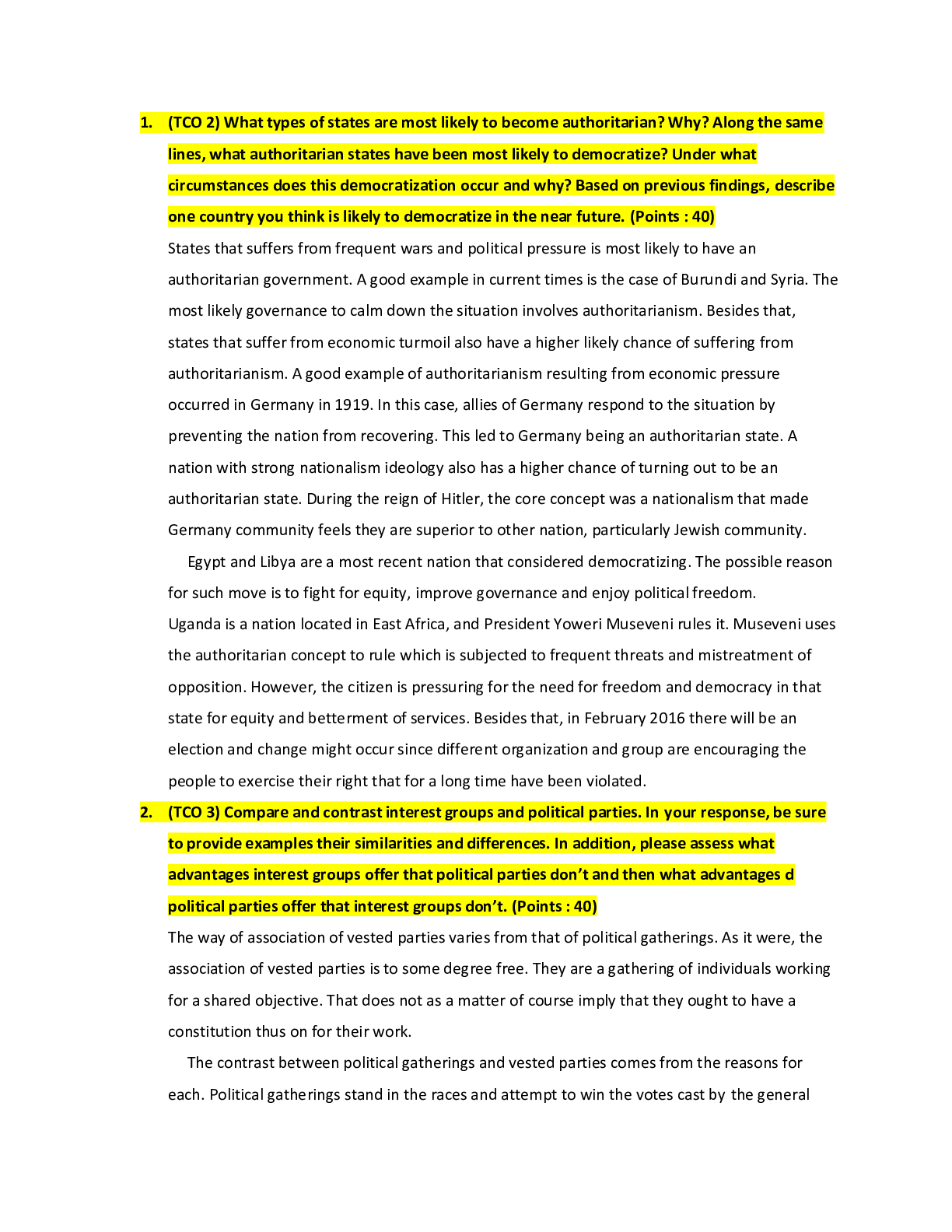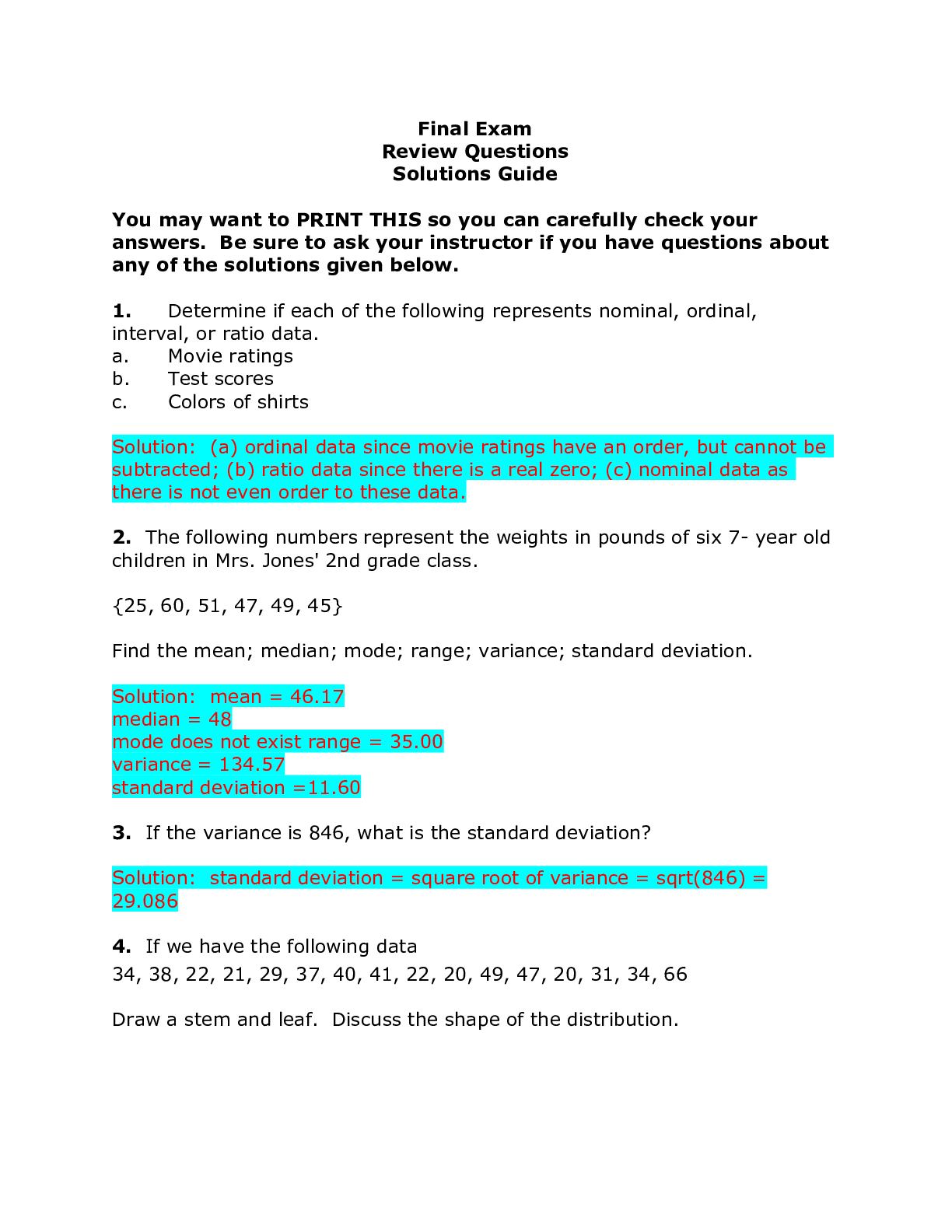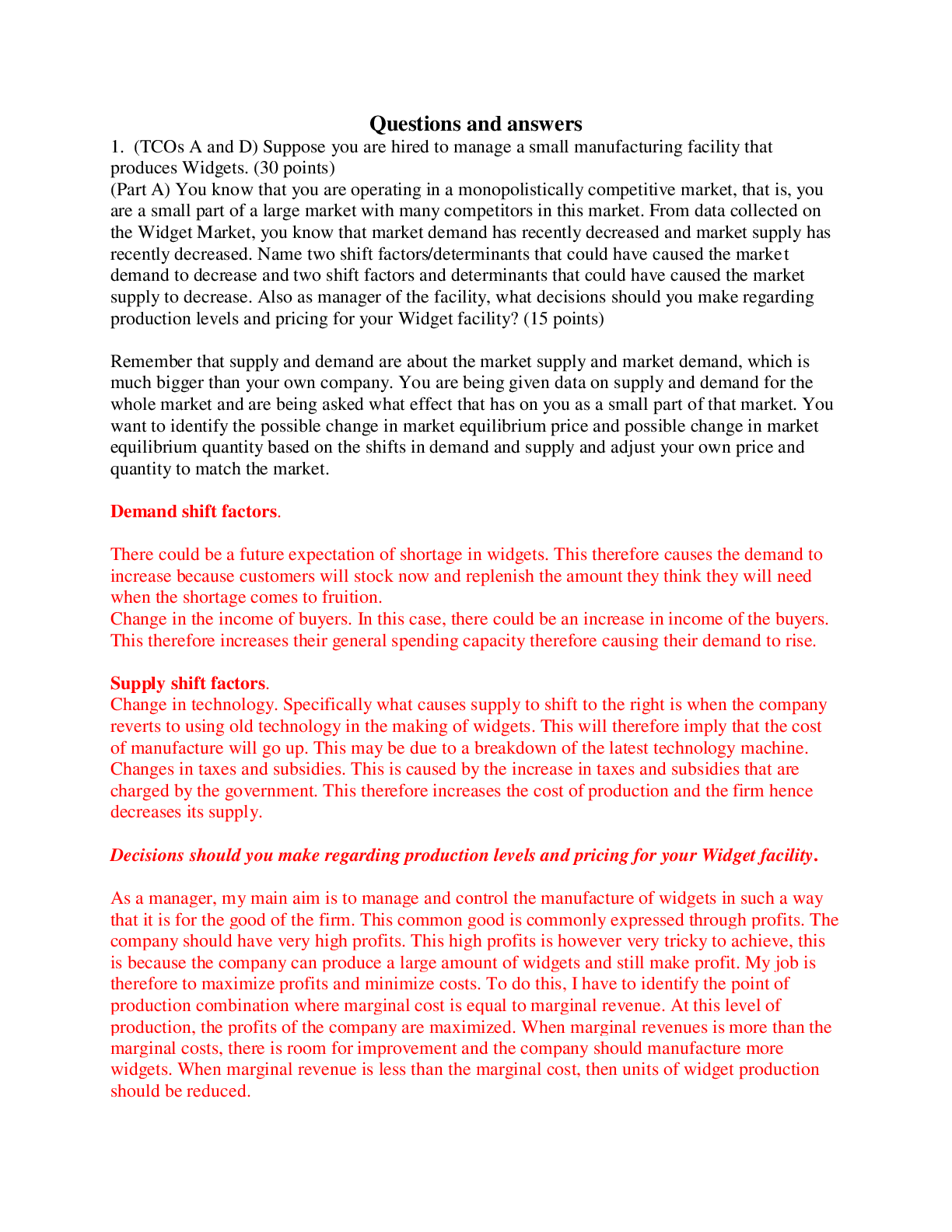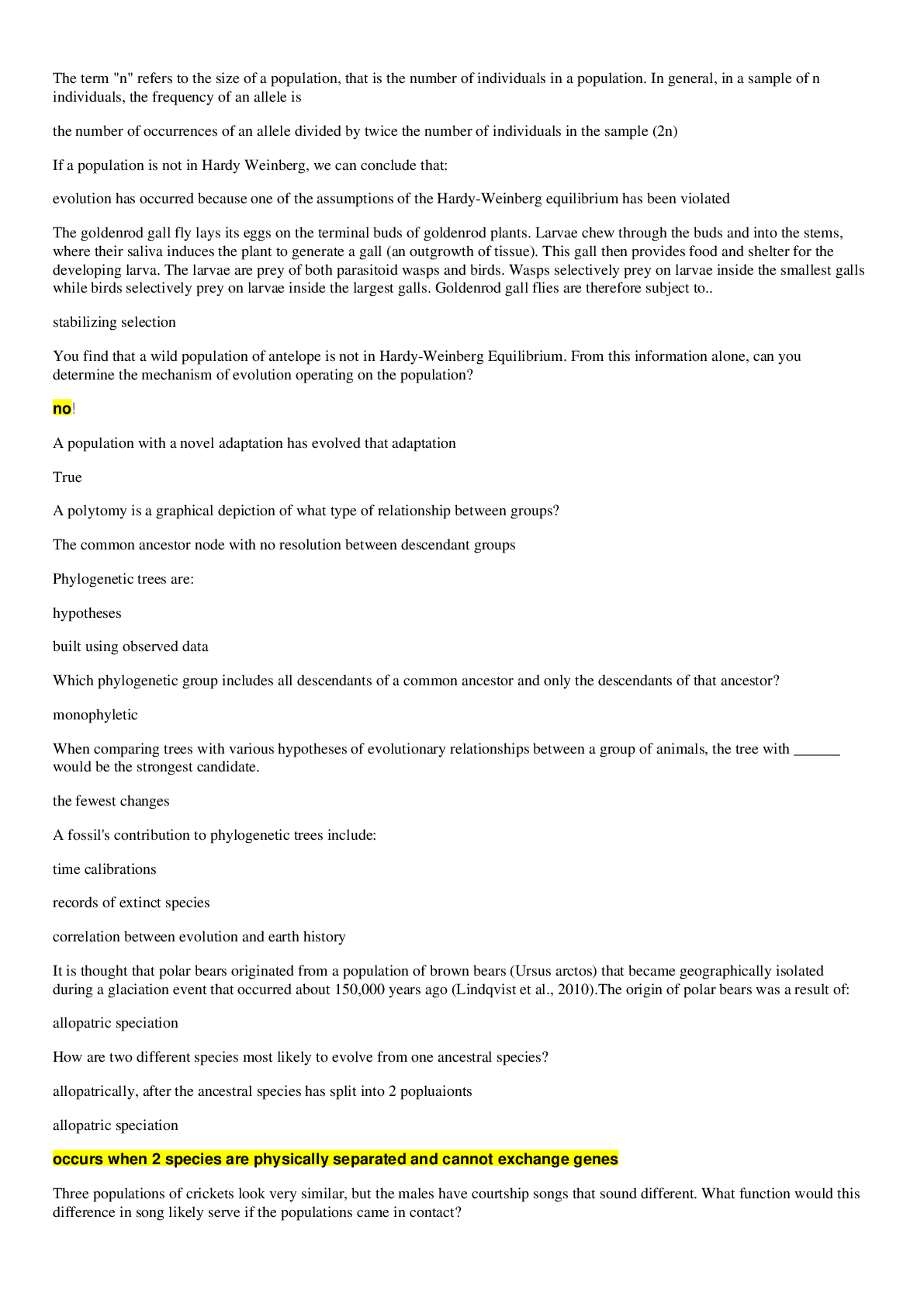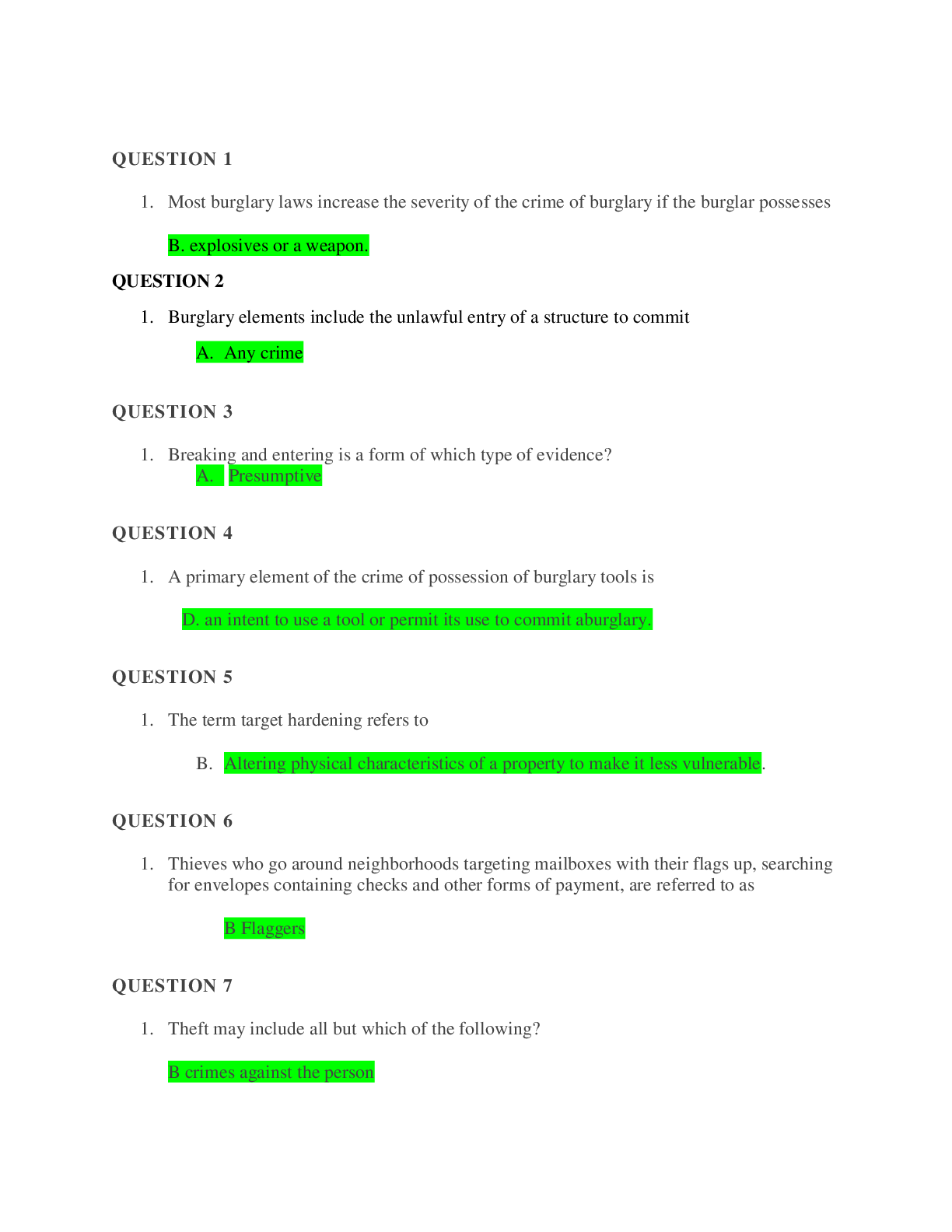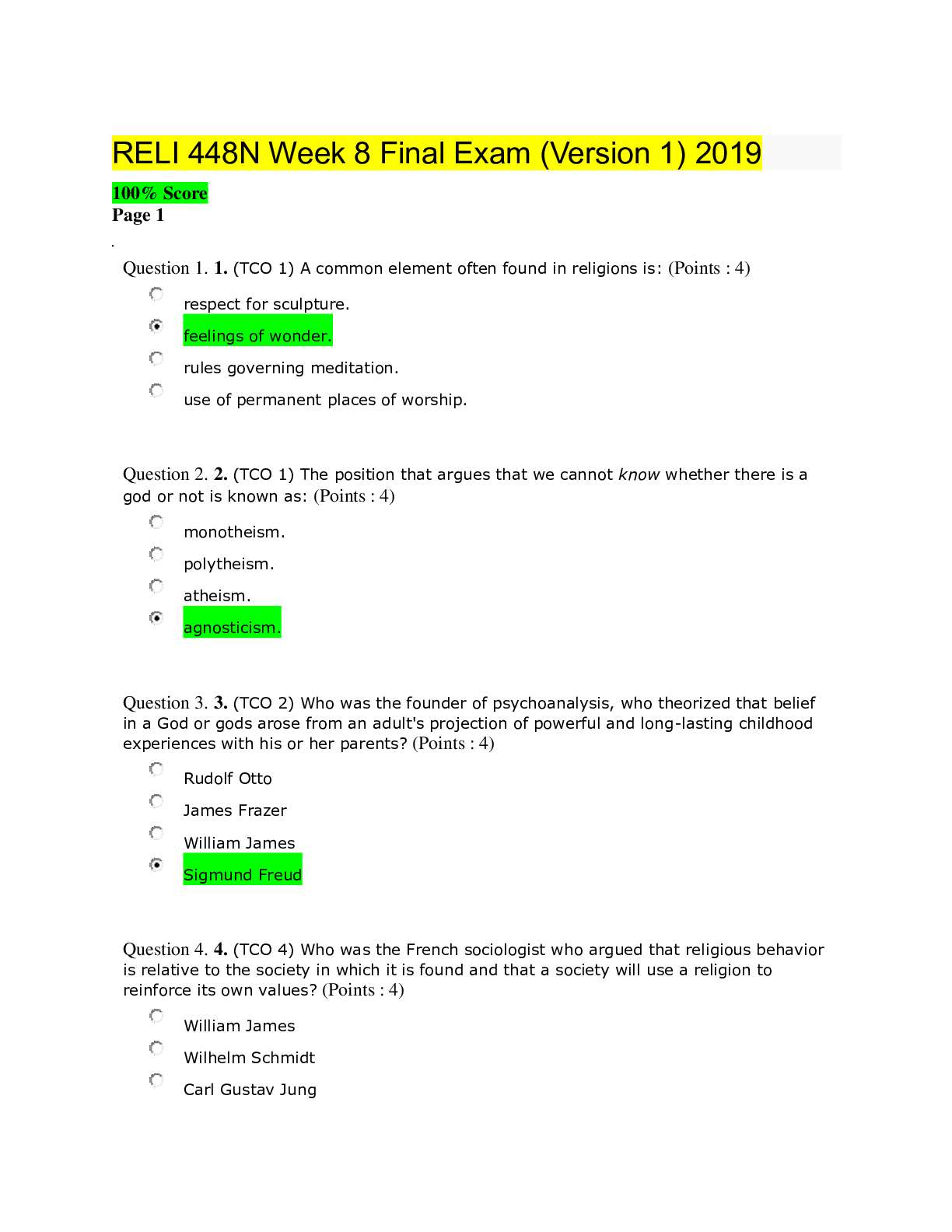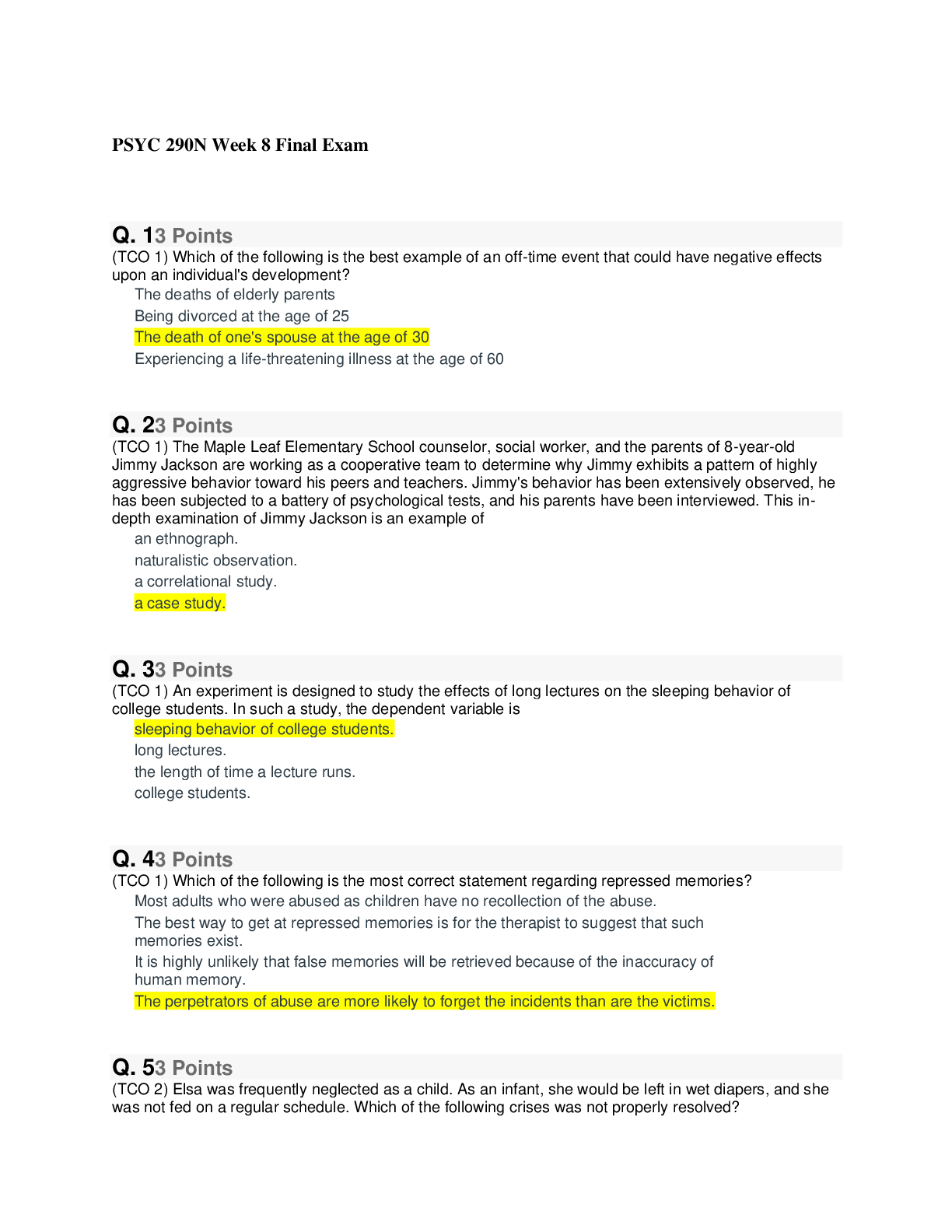*NURSING > EXAM > NR507 Week 8 Final Exam / NR 507 Week 8 Final Exam (Latest): Advanced Pathophysiology: ChamberlainCo (All)
NR507 Week 8 Final Exam / NR 507 Week 8 Final Exam (Latest): Advanced Pathophysiology: ChamberlainCollege of Nursing Chamberlain NR 507 Final Exam / Chamberlain NR507 Final Exam (Latest): Advanced Pathophysiology All Answers 100% Correct Guaranteed GRADE A+
Document Content and Description Below
1 What is the major virus involved in the development of cervical cancer? a) Herpes simplex virus type 6 b) Herpes simplex virus type 2 c) Human papillomavirus d) Human immunodeficiency virus Questi... on 2 Which statement accurately describes childhood asthma? a) An obstructive airway disease characterized by reversible airflow obstruction, bronchial hyperreactivity, and inflammation b) A pulmonary disease characterized by severe hypoxemia, decreased pulmonary compliance, and diffuse densities on chest x-ray imaging c) A pulmonary disorder involving an abnormal expression of a protein, producing viscous mucus that lines the airways, pancreas, sweat ducts, and vas deferens d) An obstructive airway disease characterized by atelectasis and increased pulmonary resistance as a result of a surfactant deficiency Question 3 The ability of the pathogen to invade and multiply in the host is referred to as: a) Infectivity b) Toxigenicity c) Pathogenicity d) Virulence Question 4 Obesity creates a greater risk for dehydration in people because: a) Adipose cells contain little water because fat is water repelling. b) The metabolic rate of obese adults is slower than the rate of lean adults. c) The rate of urine output of obese adults is higher than the rate of output of lean adults. d) The thirst receptors of the hypothalamus do not function effectively. Question 5 Continued therapy of pernicious anemia (PA) generally lasts how long? a) 6 to 8 weeks b) 8 to 12 months c) Until the iron level is normal d) The rest of one’s life Question 6 Which statement best describes cystic fibrosis? a) Obstructive airway disease characterized by reversible airflow obstruction, bronchial hyperreactivity, and inflammation b) Respiratory disease characterized by severe hypoxemia, decreased pulmonary compliance, and diffuse densities on chest xray imaging c) Pulmonary disorder involving an abnormal expression of a protein-producing viscous mucus that obstructs the airways, pancreas, sweat ducts, and vas deferens d) Pulmonary disorder characterized by atelectasis and increased pulmonary resistance as a result of a surfactant deficiency Question 7 What pulmonary defense mechanism propels a mucous blanket that entraps particles moving toward the oropharynx? a) Nasal turbinates b) Alveolar macrophages c) Cilia d) Irritant receptors on the nares Question 8 As stated in the Frank-Starling law, a direct relationship exists between the of the blood in the heart at the end of diastole and the of contraction during the next systole. a) Pressure; force Volume; b) strength Viscosity; c) force Viscosity; strength Question 9 : a) 2 years b) 1 year c) 10 months d) 5 months Question 10 Carcinoma refers to abnormal cell proliferation originating from which tissue origin? a) Blood vessels b) Epithelial cells c) Connective tissue d) Glandular tissue Question 11 Which of the following describes how the body compensates for anemia? a) Increasing rate and depth of breathing b) Decreasing capillary vasoconstriction c) Hemoglobin holding more firmly onto oxygen d) Kidneys releasing more erythropoietinQuestion 12 What term is used to describe a hernial protrusion of a saclike cyst that contains meninges, spinal fluid, and a portion of the spinal cord through a defect in a posterior arch of a vertebra? a) Encephalocele b) Meningocele c) Spina bifida occulta d) Myelomeningocele Question 13 Chvostek and Trousseau signs indicate which electrolyte imbalance? a) Hypokalemia b) Hyperkalemia c) Hypocalcemia d) Hypercalcemia Question 14 After sexual transmission of HIV, a person can be infected yet seronegative for how many months? a) 1 to 2 b) 6 to 14 c) 18 to 20 d) 24 to 36 Question 15 Which hormone prompts increased anxiety, vigilance, and arousal during a stress response? a) Norepinephrine b) Epinephrine c) Cortisol d) Adrenocorticotropic hormone (ACTH) Question 16 Which blood cells are the chief phagocytes involved in the early inflammation process? a) Neutrophils b) Monocytes c) Eosinophils d) Erythr Question 17 Where are alveolar macrophages found? a) Skin b) Breasts c) Gastrointestinal tract d) Lungs Question 18 Which normal physiologic change occurs in the aging pulmonary system? a) Decreased fl [Show More]
Last updated: 2 years ago
Preview 1 out of 9 pages

Buy this document to get the full access instantly
Instant Download Access after purchase
Buy NowInstant download
We Accept:

Reviews( 0 )
$13.50
Can't find what you want? Try our AI powered Search
Document information
Connected school, study & course
About the document
Uploaded On
Jun 06, 2022
Number of pages
9
Written in
Additional information
This document has been written for:
Uploaded
Jun 06, 2022
Downloads
0
Views
74

